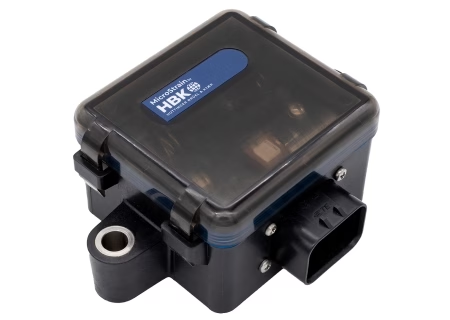What Are WSNs & What Do They Do?
Wireless sensor nodes, also called wireless sensor networks (WSNs), are a group of small, low-cost and low-power devices equipped with sensors, processing units and wireless communication interfaces. These devices collect data from the surrounding environment and send the data to a central server or gateway for analysis and processing. WSNs are finding increasing application in a wide range of fields. This includes agriculture, environmental monitoring, healthcare, transportation and much more.
Agriculture
One of their primary applications is agriculture. In agriculture, wireless sensor nodes collect data on soil moisture, temperature, humidity and other environmental parameters. This data enables uses to optimise irrigation schedules, fertilizer application and crop management practices. Wireless sensor nodes also detect early signs of plant disease or pest infestation. Thus allowing farmers to take timely corrective measures to prevent crop damage.
Environmental Monitoring
Another important application of wireless sensor nodes is environmental monitoring. Users can deploy these devices in remote locations to monitor air quality, water quality and weather conditions. Wireless sensor nodes can also monitor natural disasters. This includes floods, earthquakes, and landslides. By providing real-time data on environmental conditions, wireless sensor nodes help improve our understanding of the natural world and better manage natural resources.
Healthcare
Wireless sensor nodes also find application in healthcare. These devices can also monitor vital signs such as heart rate, blood pressure and temperature. Healthcare professionals also use WSNs to remotely monitor the health of patients. Wireless sensor nodes can also detect falls or other accidents. This feature allows caregivers to quickly respond and provide assistance. In addition, wireless sensor nodes can also monitor the movement of patients. Thus preventing unwanted wandering and ensuring safety.
Transportation
Transportation is another field where wireless sensor nodes are finding application. These devices monitor the condition of vehicles, track their location and provide real-time data on traffic conditions. Wireless sensor nodes also monitor the condition of roads and bridges. They detect signs of wear and tear and help to prevent accidents as a result.
Critical For Data Collection
In conclusion, WSNs are finding increasing application in a wide range of fields, including agriculture, environmental monitoring, healthcare, transportation and much more. These devices are becoming increasingly important for collecting real-time data on environmental conditions. They also provide valuable insights into the natural world. As technology continues to advance, we can expect to see even more innovative applications of wireless sensor nodes in the years to come.
A Powerful Tool
The Wireless Sensor Node SG-LINK-200 by Microstrain by HBK is a powerful tool. It is revolutionary in the world of wireless sensing. That is because its design allows users to use it in a wide range of applications. This includes anything from industrial monitoring to scientific research. The SG-LINK-200 is a wireless sensor node that collects, process and transmits data wirelessly. It is ideal for remote monitoring and control applications.
Wireless Connectivity
One of the key features of the SG-LINK-200 is its wireless connectivity. It uses a low-power, high-speed wireless network that allows it to transmit data over long distances. This makes it ideal for applications that require monitoring of remote locations, such as pipelines, bridges, and other critical infrastructure. It is also useful for monitoring the environment, such as weather patterns, air quality, and soil conditions.
Versatile
The SG-LINK-200 is also highly versatile. It comes with a range of built-in sensors that monitor temperature, humidity and pressure. This allows it to collect a wide range of data from the environment. It also connects to external sensors,. This includes accelerometers and strain gauges. As a result it is highly adaptable and useful in a wide range of applications.
Easy to Use
Another important feature of the SG-LINK-200 is its ease of use. It is easily configurable using a web-based interface. As a result users can customise it to their specific needs. Furthermore, it also has a built-in battery that lasts for several years. As a result, it is ideal for long-term monitoring applications. The device also easily mounts, and its compact design makes it easy to install in tight spaces.
Reliable
The SG-LINK-200 is also highly reliable. It operates in harsh environments and is resistant to shock, vibration and extreme temperatures. It also has a high level of data security, with built-in encryption and authentication features. These features ensure data is safe and secure.
In conclusion, the MicroStrain by HBK’s Wireless Sensor Node SG-LINK-200 is a powerful and versatile tool that has many applications in a wide range of industries. Its wireless connectivity, built-in sensors, and ease of use make it ideal for remote monitoring and control applications. Finally its reliability and data security features allow users to trust this tool for critical infrastructure monitoring.
Contact Us
If you would like to know more about this Wireless Sensor Node please contact us here.
